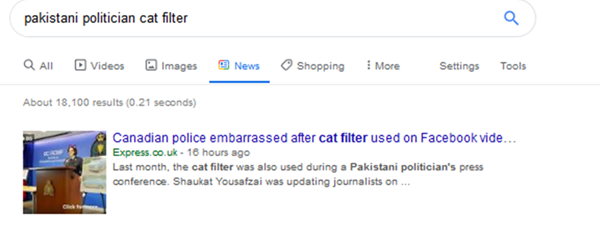Checking Other Sources
Now watch this video:
Select this link to access a video description for people who are blind or low-vision.
This step may sometimes be the last one you do, but it could also be the first. The News tab is better than the main Google search for this step because it only shows real news sources. While not every source that’s included is perfectly reliable, they are all news outlets that really exist. Here is an example of how this works:

You can also use our custom news search, tiny,cc.news-search, which searches Canadian and international sources of reliable news.
By taking this step, you can be sure you get the whole story. Remember, all sources make mistakes sometimes, but reliable ones will correct them.
Looking at other sources can help you find out if the first place you saw something might have been leaving something out. This is also a good way of discovering any possible bias that might exist in any one source
You can also use this step to find out whether something agrees with what most experts on that topic think – what’s called the consensus view. While it’s generally good reporting to give both sides of a story, including views that experts agree aren’t right can result in spreading misinformation.
Wikipedia is a good place to find the consensus on a topic because each Wikipedia article represents the consensus of its editors. Just remember to watch for warning banners that suggest a specific article might not be reliable.

You can use our custom search engine to find the consensus on specialist topics like science and medicine.
If you want to know if another specialist source is reliable, Verify the Source.
